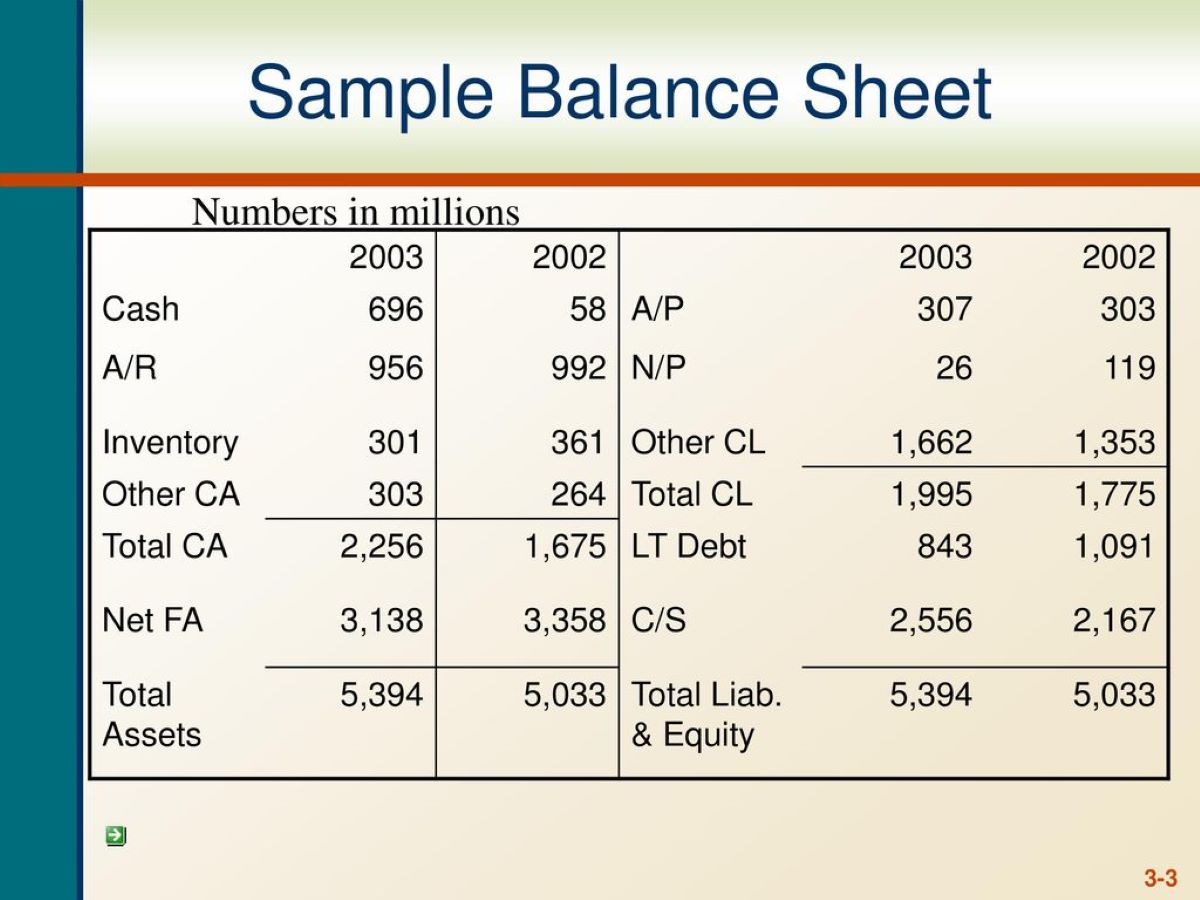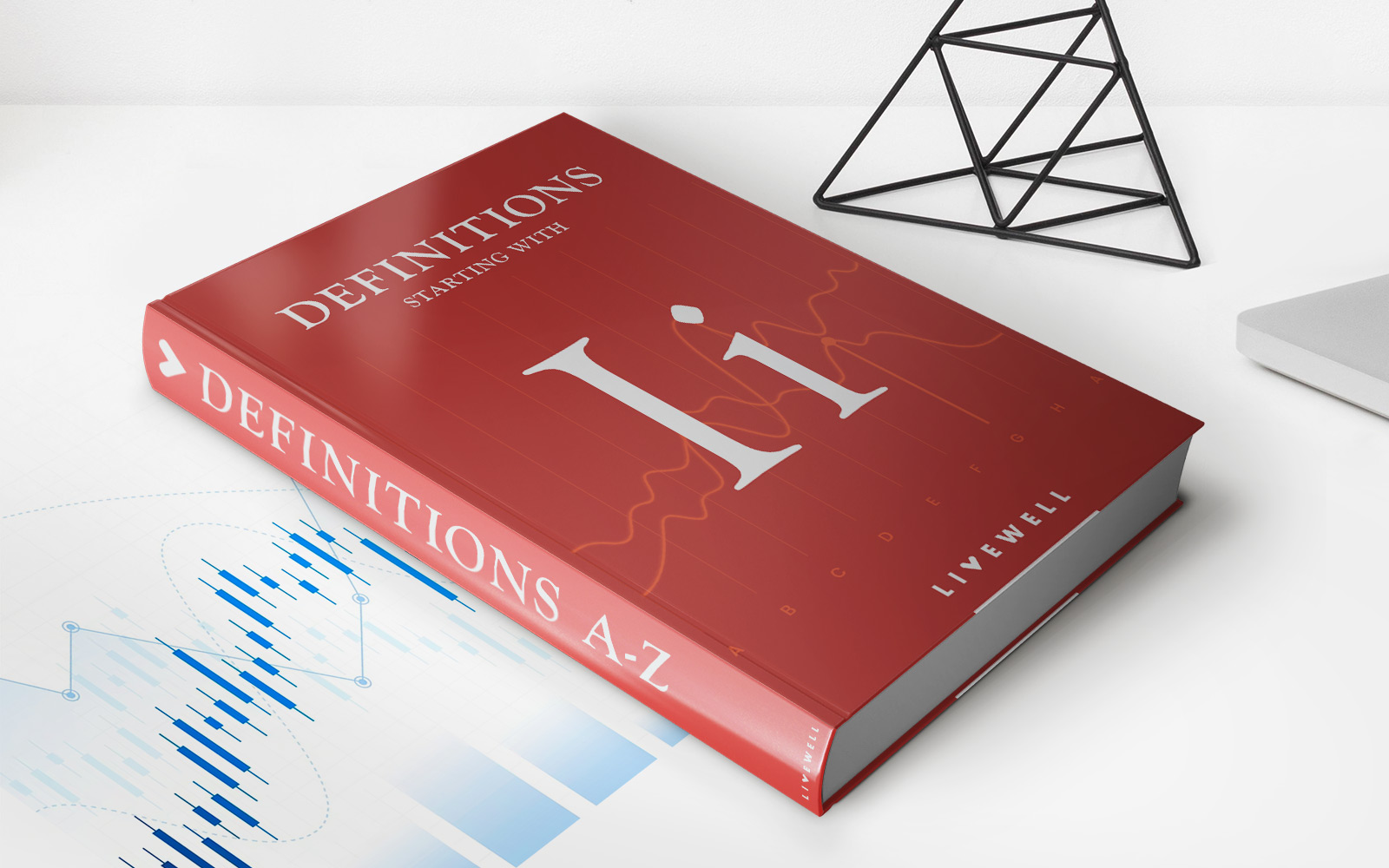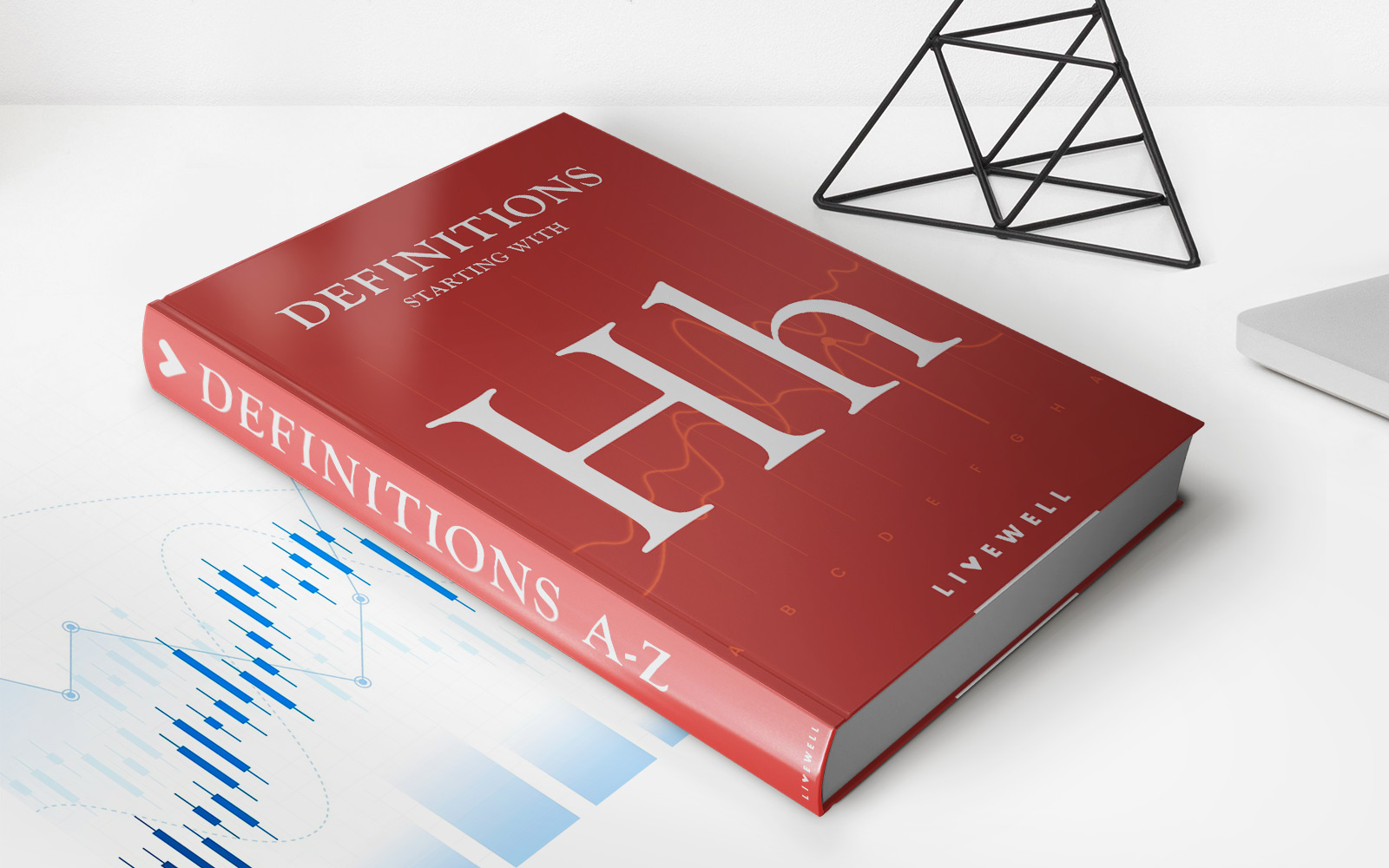

Finance
What Does Current Balance Mean For Credit Card
Modified: December 29, 2023
Understand the concept of current balance on your credit card and how it impacts your financial standing. Discover how managing your finances plays a crucial role in maintaining a healthy credit profile.
(Many of the links in this article redirect to a specific reviewed product. Your purchase of these products through affiliate links helps to generate commission for LiveWell, at no extra cost. Learn more)
Table of Contents
Introduction
Welcome to the world of credit cards! Whether you are a seasoned cardholder or someone new to the world of plastic money, understanding the various terminologies associated with credit cards is crucial. One such term that often mystifies cardholders is the “current balance.”
When you receive your credit card statement each month, it can be overwhelming to navigate through the different numbers and figures. However, the current balance is a key piece of information that you need to pay attention to. In simple terms, the current balance refers to the amount you owe on your credit card at a specific point in time.
While it may sound straightforward, there are several components that make up the current balance. These components include your outstanding purchases, cash advances, balance transfers, interest charges, and fees. Understanding how these factors impact your current balance is crucial in managing your credit card responsibly and avoiding unnecessary debt.
In this article, we will delve deeper into the definition of the current balance, its components, and why it is important to keep an eye on it. We will also provide you with some invaluable tips on how to effectively manage and control your current balance. So, let’s embark on this financial journey and demystify the concept of the current balance!
Understanding Credit Card Balances
Before we delve into the concept of the current balance, it’s essential to have a basic understanding of credit card balances in general. When you use your credit card to make purchases or engage in other transactions, an account balance is created. This balance represents the total amount of money you owe to the credit card issuer.
It’s important to note that credit card balances can be categorized into different types: outstanding balance, statement balance, and current balance. While these terms refer to different aspects of your credit card debt, they are interconnected and play a crucial role in managing your finances.
The outstanding balance refers to the total amount of money you owe on your credit card at any given time. It includes all your purchases, cash advances, balance transfers, and any applicable fees or charges.
The statement balance, on the other hand, is the amount that appears on your credit card statement at the end of each billing cycle. It includes all the transactions that occurred during that particular period, as well as any finance charges and fees.
Now, let’s focus on the current balance. Unlike the statement balance, which reflects the amount you owed at the end of the billing cycle, the current balance represents the real-time amount you owe on your credit card.
The current balance is the result of the outstanding balance minus any payments or credits that have been applied since the statement was generated. It takes into account any recent transactions or adjustments that have occurred after the statement date.
Understanding these different types of credit card balances is crucial for effective financial planning and debt management. This knowledge enables you to make informed decisions about your spending habits and develop strategies to pay off your credit card debt in a responsible manner.
Now that we have a basic understanding of credit card balances, let’s dive into the specifics of the current balance and its components.
Definition of Current Balance
The current balance is the amount of money you owe on your credit card at a specific point in time. It is a dynamic figure that changes as you make new purchases, payments, or adjustments to your credit card account.
Think of the current balance as a snapshot of your credit card debt at any given moment. It provides an up-to-date reflection of your financial obligations to the credit card issuer.
Unlike the statement balance, which only considers the transactions up until the end of the billing cycle, the current balance takes into account any recent activity on your credit card. This includes new purchases, cash advances, balance transfers, as well as any fees or charges incurred.
The calculation of the current balance is relatively straightforward. It starts with the outstanding balance, which comprises all transactions that have been made but not yet paid off. Then, any payments or credits applied to your account since the statement was generated are subtracted from the outstanding balance to arrive at the current balance.
For example, let’s say your outstanding balance is $1,000. Since the statement was generated, you made a payment of $200. In this case, your current balance would be $800 (Outstanding balance of $1,000 minus payment of $200).
It’s important to note that the current balance can fluctuate throughout the billing cycle as you make new purchases or payments. Therefore, it’s vital to stay on top of your credit card activity and regularly check your current balance to have an accurate understanding of your debt obligations.
Understanding the definition of the current balance is crucial for effective financial management. By monitoring your current balance, you can stay informed about your credit card debt, avoid unnecessary interest charges, and make timely payments to reduce your overall indebtedness.
Now that we understand the definition of the current balance, let’s explore the different components that contribute to its calculation.
Components of Current Balance
To fully comprehend the current balance on your credit card, it’s essential to understand the different components that contribute to its calculation. These components include:
- Outstanding Purchases: This refers to the total amount of money you owe on your credit card for recent purchases that have not yet been paid off. It includes charges for goods or services that you’ve acquired using your credit card.
- Cash Advances: If you’ve used your credit card to obtain cash from an ATM or to make cash-like transactions, such as traveler’s checks or gambling activities, the amount of these cash advances will be included in your current balance.
- Balance Transfers: Sometimes, individuals transfer their outstanding credit card balances from one card to another with better terms or lower interest rates. If you’ve made such a balance transfer, the transferred amount will be considered part of your current balance.
- Interest Charges: When you carry a balance on your credit card, the credit card issuer charges interest on that outstanding amount. The interest charges accrued since the last statement will be added to your current balance.
- Fees: Credit card companies may levy various fees for services or penalties, such as annual fees, late payment fees, or over-limit fees. These fees will be included in your current balance.
Understanding the components that make up your current balance is vital in gaining a comprehensive view of your credit card debt. By recognizing these elements, you can assess where your money is going, identify areas of overspending, and make informed decisions to manage your debt effectively.
In the next section, we will explore the specific transactions that are included in your credit card’s current balance.
Transactions Included in Current Balance
When it comes to calculating the current balance on your credit card, several types of transactions are taken into account. These transactions contribute to your overall credit card debt and are reflected in your current balance. Let’s take a closer look at the transactions that are included:
- Purchases: Any purchases made using your credit card contribute to your current balance. This includes everyday expenses like groceries, bills, clothing, and entertainment. The amount owed for these purchases will be added to your current balance until they are paid off.
- Cash Advances: If you’ve used your credit card to withdraw cash from an ATM or obtain cash-like transactions, such as traveler’s checks or gambling activities, these cash advances will be reflected in your current balance. Keep in mind that cash advances often come with higher interest rates and fees.
- Balance Transfers: When you transfer your outstanding balance from one credit card to another, the transferred amount is added to your current balance. Balance transfers are often used to take advantage of lower interest rates or promotional offers, but it’s important to consider any associated fees.
- Interest Charges: If you carry a balance on your credit card, the credit card issuer charges interest on that outstanding amount. The interest charges accrued since your last statement will be included in your current balance.
- Finance Charges: In addition to interest charges, credit card companies may impose finance charges on specific transactions, such as cash advances or balance transfers. These charges will contribute to your current balance.
- Fees and Penalties: Credit card companies may levy various fees, such as annual fees, late payment fees, over-limit fees, or foreign transaction fees. These fees are added to your current balance and increase the amount you owe.
By understanding the transactions that are included in your current balance, you can gain a clearer idea of how your credit card debt is accumulating. It’s important to keep track of these transactions and regularly review your statements to stay informed about your financial obligations.
Now that we have explored the various transactions that contribute to your current balance, let’s move on to understanding the importance of monitoring and managing your current balance effectively.
Importance of Current Balance
The current balance on your credit card holds significant importance when it comes to managing your finances effectively. Understanding and monitoring your current balance is crucial for several reasons:
1. Debt Management:
By keeping track of your current balance, you gain a clear understanding of your credit card debt. This knowledge allows you to assess your financial situation and make informed decisions about your spending habits. It helps you avoid accumulating excessive debt and work towards paying off your outstanding balances in a timely manner.
2. Avoiding Interest Charges:
If you carry a balance on your credit card, interest charges accrue on the outstanding amount. By staying aware of your current balance, you can make timely payments to reduce your debt and minimize the interest charges. Paying off your balances in full each month is the most effective strategy to avoid interest altogether.
3. Budgeting and Financial Planning:
Your current balance provides valuable insights into your spending patterns. Monitoring your current balance allows you to assess your expenses, identify areas of excess spending, and adjust your budget accordingly. It helps you prioritize your financial goals and make necessary adjustments to stay within your means.
4. Credit Score Impact:
Consistently maintaining a low credit card balance and managing your current balance responsibly can have a positive impact on your credit score. A lower balance demonstrates responsible credit usage and can improve your creditworthiness in the eyes of lenders.
5. Avoiding Over-limit Situations:
Being mindful of your current balance helps you avoid going over your credit limit. Exceeding your credit limit can result in additional fees, penalties, and potential damage to your credit score. Monitoring your current balance allows you to make informed decisions to stay within your available credit limit.
Overall, understanding and managing your current balance effectively is essential for maintaining financial stability and making responsible credit choices. By staying aware of your current balance, you can control your credit card debt, avoid unnecessary fees, minimize interest charges, and work towards achieving your financial goals.
Next, we will explore strategies and tips for effectively managing and controlling your current balance.
Managing Current Balance
Effectively managing your current balance is crucial to maintaining financial stability and avoiding unnecessary debt. Here are some strategies and tips to help you manage your credit card balance responsibly:
1. Regularly Monitor Your Current Balance:
Stay on top of your credit card activity by regularly checking your current balance. This will give you a clear understanding of your debt obligations and help you track your progress in paying off your credit card balances.
2. Pay On Time, Every Time:
Make it a priority to pay your credit card bill on time to avoid late payment fees and penalties. Late payments can also negatively impact your credit score. Set up reminders or automatic payments to ensure you never miss a payment.
3. Pay More Than the Minimum Payment:
Avoid the trap of paying only the minimum amount due. While it may be tempting to make the minimum payment, it can lead to long-term debt and higher interest charges. Aim to pay more than the minimum payment whenever possible to reduce your current balance faster.
4. Create a Budget:
Develop a monthly budget that includes all your expenses, including credit card payments. Allocate a specific amount towards paying off your credit card balances each month. This will help you stay disciplined with your spending and ensure you have enough funds to reduce your current balance.
5. Use Credit Responsibly:
Avoid unnecessary purchases and be mindful of your credit card usage. Only charge expenses that you can afford to pay off in full each month. Consider the long-term impact of your purchasing decisions and prioritize your needs over wants.
6. Consider Balance Transfers:
If you have high-interest credit card debt, consider transferring your balances to a card with a lower interest rate. This can help you consolidate your debt and potentially save money on interest charges. However, be cautious of any balance transfer fees and read the terms and conditions carefully.
7. Seek Professional Advice if Needed:
If you find yourself struggling to manage your current balance or facing overwhelming debt, consider seeking advice from a financial advisor or credit counseling service. They can provide guidance on debt management strategies and help you develop a plan to regain control of your finances.
By implementing these strategies and tips, you can effectively manage your current balance, reduce your credit card debt, and work towards achieving financial stability.
Now, let’s explore additional tips for controlling your current balance and maintaining responsible credit card usage.
Tips for Controlling Current Balance
Controlling your current balance is essential for managing your credit card debt and maintaining financial well-being. Here are some valuable tips to help you keep your current balance under control:
1. Set a Monthly Spending Limit:
Establish a monthly spending limit for your credit card and stick to it. This will help you avoid impulsive purchases that can contribute to an increase in your current balance. Track your expenses and make adjustments as needed to stay within your set limit.
2. Pay Your Balance in Full:
Whenever possible, strive to pay off your credit card balance in full each month. By doing so, you avoid accumulating interest charges and keep your current balance at zero. This practice ensures that you’re using your credit card responsibly and not carrying unnecessary debt.
3. Avoid Using Your Credit Card for Cash Advances:
Cash advances typically come with high-interest rates and fees. Whenever possible, avoid using your credit card to withdraw cash or obtain cash-like transactions. Instead, rely on your bank account or an emergency fund for cash needs.
4. Prioritize Payments:
If you have multiple credit cards with outstanding balances, prioritize your payments. Consider paying off the card with the highest interest rate or the highest balance first. This approach can help you save money on interest charges over time.
5. Be Mindful of Credit Utilization:
Credit utilization is the percentage of your available credit that you are using. Aim to keep your credit utilization ratio below 30%. Utilizing a high percentage of your available credit can negatively impact your credit score and increase your current balance.
6. Be Diligent with Payment Deadlines:
Stay vigilant about payment due dates and avoid late payments. Late payment fees and penalties can significantly increase your current balance and damage your credit score. Set reminders or automate your payments to ensure you never miss a deadline.
7. Regularly Review Your Statements:
Take the time to review your credit card statements thoroughly. Look for any discrepancies or unauthorized charges. By carefully examining your statements, you can catch any errors or fraudulent activities early and prevent them from impacting your current balance.
Implementing these tips will help you maintain control over your current balance, reduce your credit card debt, and improve your overall financial health. By practicing responsible credit card usage and staying on top of your payments, you can achieve greater peace of mind and financial stability.
Now, let’s conclude our exploration of the importance of managing your current balance effectively.
Conclusion
Understanding and effectively managing your current balance is crucial for maintaining financial stability and avoiding unnecessary debt. The current balance represents the real-time amount you owe on your credit card and reflects the various components of your credit card debt, including outstanding purchases, cash advances, balance transfers, interest charges, and fees.
By regularly monitoring your current balance, you can gain a clear understanding of your credit card debt, make informed decisions about your spending habits, and work towards paying off your balances responsibly. Controlling your current balance also helps you avoid excessive interest charges, maintain a good credit score, and stay within your available credit limit.
To manage your current balance effectively, it’s important to pay your credit card bill on time, pay more than the minimum payment, create a budget, and use credit responsibly. By setting a monthly spending limit, paying off your balance in full, and avoiding cash advances, you can keep your current balance under control and minimize unnecessary debt.
Remember to regularly review your credit card statements, be aware of your credit utilization, and prioritize your payments. By implementing these tips and strategies, you can take control of your current balance, reduce your credit card debt, and work towards achieving financial stability.
In conclusion, understanding the concept of the current balance and effectively managing it is key to maintaining healthy financial habits. By staying informed, making responsible decisions, and staying on top of your payments, you can keep your current balance in check and pave the way towards a more secure and debt-free financial future.














